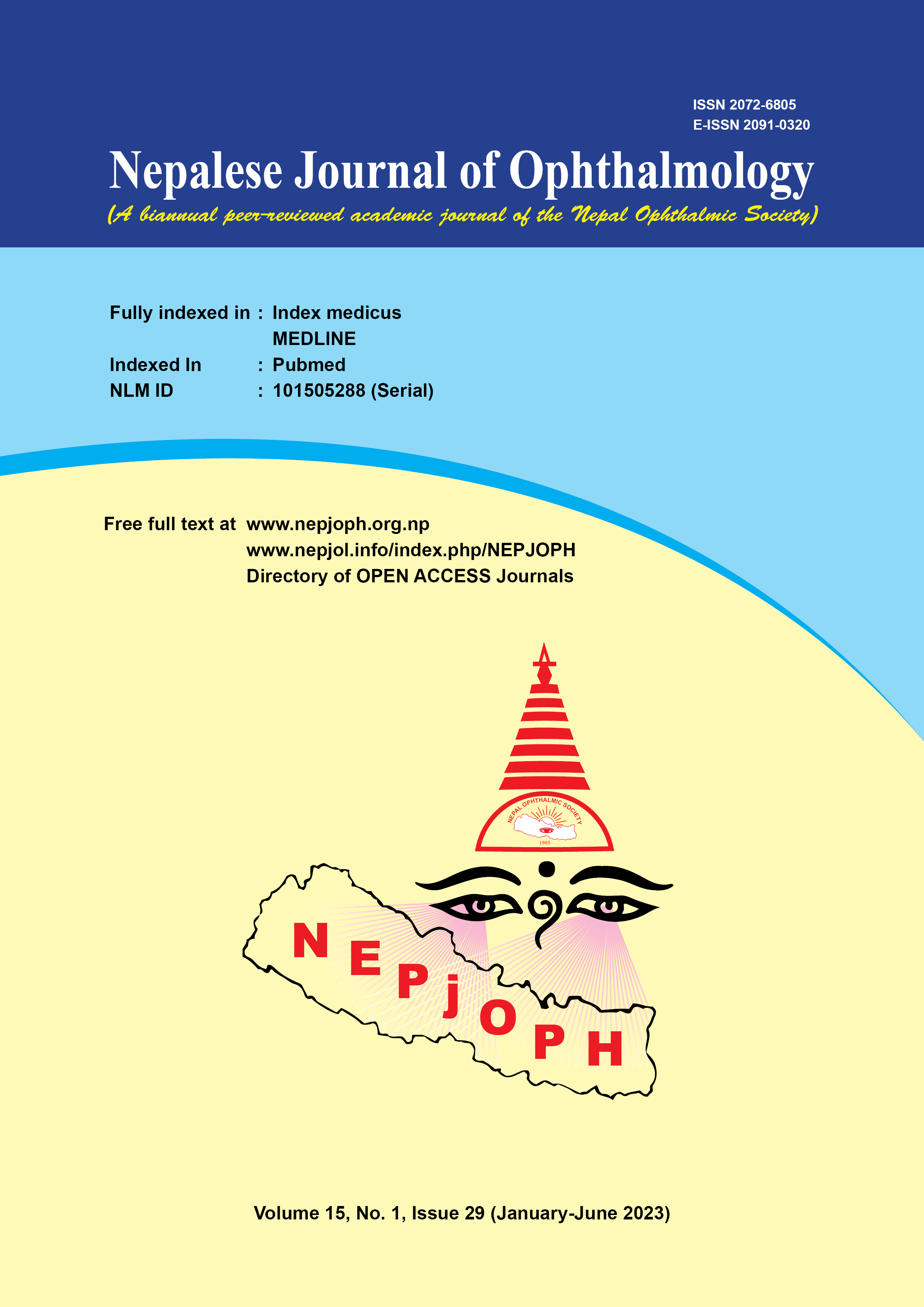Use of Bedside Ultrasound for Ophthalmic Evaluation in a Case of Traumatic Brain Injury: A Case Report
DOI:
https://doi.org/10.3126/nepjoph.v15i1.27187Keywords:
Consensual light reflex, Optic nerve sheath diameter, Pupillary size, Consensual light reflex, traumatic brain injury, optic nerve sheath diameter, pupillary size, ultrasound., UltrasoundAbstract
Background: Ophthalmological examination is an important aspect of the neurological assessment in a patient with traumatic brain injury. However, significant periorbital swelling can make direct visualization of the pupils difficult. Ultrasonic examination can be a valuable bedside tool when direct visualization fails.
Case: A case of a seven-year female child who had presented with a history traumatic brain injury is reported here.
Observations: The periorbital swelling prevented the direct visualization of the eyes. Bedside evaluation with a multipurpose ultrasound (USG) was used to monitor the pupillary diameter (PD) and the consensual pupillary light reflex (PLR) at regular intervals. The PD was measured in the B-mode while the PLR was monitored in M-mode of the USG. The optic nerve sheath diameter (ONSD) was also monitored as a correlate of intracranial pressure (ICP).
Conclusion: Ophthalmic evaluation of PD and PLR can be easily and objectively done on the bedside using USG especially in cases where the direct visualization of the pupils is difficult due to injuries and swelling of the periorbital tissues. Furthermore, ONSD measurements can also be done to monitor the changes in the ICP.
Downloads
Downloads
Published
How to Cite
Issue
Section
License
Copyright (c) 2023 Nepalese Journal of Ophthalmology

This work is licensed under a Creative Commons Attribution-NonCommercial-NoDerivatives 4.0 International License.
This license enables reusers to copy and distribute the material in any medium or format in unadapted form only, for noncommercial purposes only, and only so long as attribution is given to the creator.




